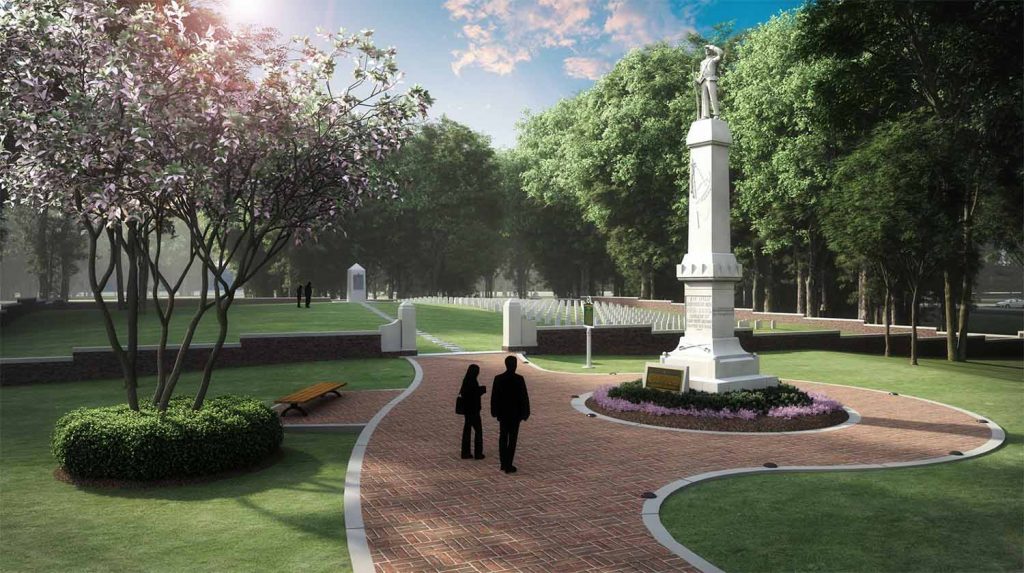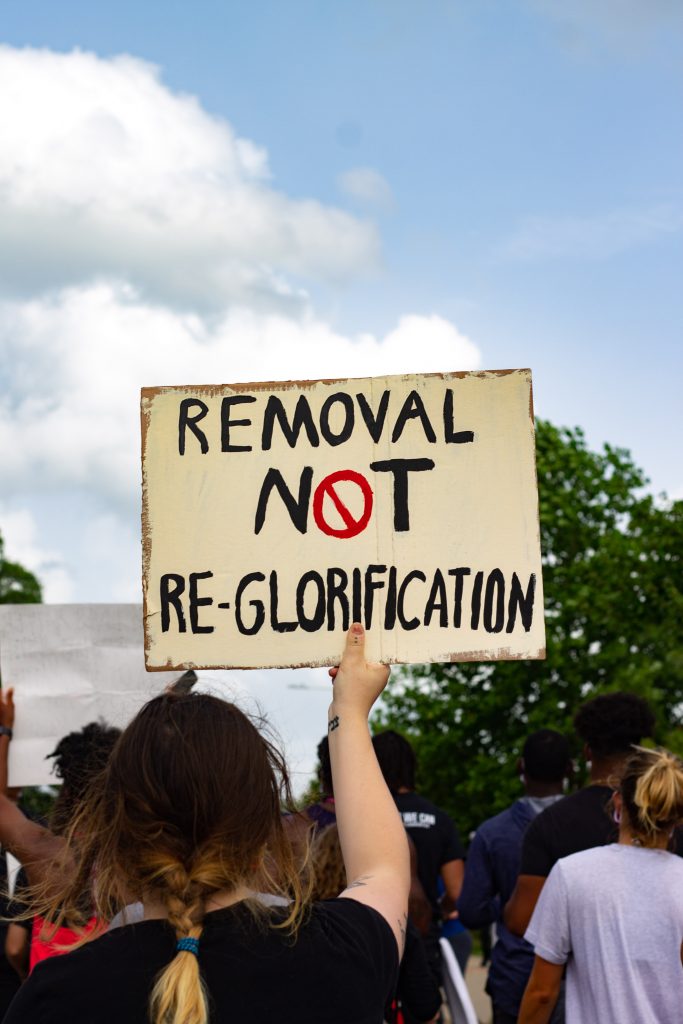
The Confederate monument located in the Circle and its relocation to the Confederate cemetery on campus has been a hot topic of conversation over the past several years. Now the discussion is coming to a head.
Chancellor Glenn Boyce sent the university’s proposal for relocation to the state Institutions of Higher Learning (IHL) Board of Trustees on June 9, and the Board approved the 156-page proposal on the morning of June 18.
However, since the proposal was only made available to the public on the night of June 17, few have actually read the document in its entirety. Here is what you need to know:
- The university has the power to cancel the relocation at any time.
The relocation is estimated to cost $1.15 million, and with regards to the funding, all that university administration has said is that the project will be “privately sourced.” The university has not made public whether it has yet received all or any of the funds from the private donor or donors. However, construction began on June 22, and the university’s contract with McCarty King Construction Company states that the project will not take more than 90 days to complete once construction has started. Therefore, the relocation should be done by September 20.
Under the Project Manual and Specifications section of the proposal, terms of the contract between the university and the contractor are outlined. If funds for the project are unavailable for any reason, the contract will be cancelled. Additionally, the university “may, without cause or fault of either the contractor or the (university), terminate the contract in whole or in part if the (university), in its sole discretion, determines it to be in the (university’s) best interest.”
- Many members of the Lafayette-Oxford-University community have been advocating for the Confederate monument on the Square to be relocated to the Confederate cemetery on campus — turns out, relocating it there isn’t legal.
The proposal cites an Opinion Letter from Mississippi Attorney General Jim Hood. The letter was sent in response to a request on behalf of the Lafayette County Board of supervisors.
In reference to Mississippi Code § 55-15-81, Hood said, “In the case of the county, for example, a monument may be ‘moved’ within the county jurisdictional limits to some other more suitable location on county property; this may be done upon a finding by the board of supervisors that such location is more appropriate for displaying the monument. A monument may not be ‘removed’ from the county or from public property.”
Because university property is state-owned, not county-owned, the monument on the Square cannot be relocated to the Confederate cemetery on campus. While most of the Square is under the City of Oxford jurisdiction, the Lafayette County Courthouse and the immediate surrounding area, where the monument is currently located, is owned by Lafayette County.
- The logistical plans for the relocation of the campus monument were thorough, detailing how workers will deconstruct, transport and reassemble the soldier and his pedestal.
The 40,000-pound, 29-foot-tall monument is composed of 12 separate marble pieces that will be disassembled in one day, moved on the second day and reassembled for the remainder of the second and into the third day. The monument pieces are to be “placed on a single, appropriate sized trailer to limit transport route to one single trip.”
Four pages of the plan are dedicated to the specifications of the 10-foot-tall fence that will enclose the monument and the cemetery until construction is completed. Both fences are already up.
Immediately following relocation, the existing brick immediately surrounding where the monument once stood will be destroyed, and the pit will be filled and covered with pine straw.
- The university needed (and attained) approval from the IHL and the Mississippi Department of Archives and History (MDAH) Board of Trustees before any “significant alterations” could be made to the “historic landmarks.”
The first code cited in Boyce’s proposal is Mississippi Code § 39-7-22, which mandates that “a permit from the Board of Trustees of the Mississippi Department of Archives and History is required in the early stages of planning and before the letting of bids for public construction or improvement affecting Mississippi Landmarks.”
The Circle and certain surrounding structures, including the Confederate monument, hold National Historic Landmark status because of the significance the area played in upholding Brown v. Board of Education following the Ole Miss riot of 1962, which was over the enrollment of the university’s first African American student, James Meredith. The National Parks Service is the entity that grants National Historic Landmark status, which the service bestowed upon the Circle in 2008. Because the university is public and owned by the state, the governing body for any historic landmark on UM property is the MDAH. The MDAH Board of Trustees authorized the relocation of the monument in December 2019.
According to Mississippi Code § 39-7-33, it is unlawful to “wilfully injure, disfigure, remove or destroy” any historical monument or structure without approval from the correlating governing body or bodies, in this case the IHL and MDAH. The following code says the violation of any codes from the chapter would result in a misdemeanor, and upon conviction, would be punished by a fine of not less than $500 and not more than $5,000, or by confinement in jail for not more than thirty days, or by both.
- The university released mock-ups of the changes to be made at the Confederate cemetery, and many of the details came under public scrutiny. The renderings were even said by some to resemble a “shrine to white supremacy.”
The detailed mock-ups of the relocated statue that were included in the last two pages of the proposal became a source of controversy when they were made known to the public. The rationale for relocation to the Confederate cemetery cites that the monument will be in a “broader and more proper historical context,” but many argue that the additions to the cemetery included in the mock-ups further memorialize and glorify the Confederacy.
The mock-ups include a bench facing the monument, flowers and trees to be planted in the area, a lighted brick walkway, and new headstones to be placed within the grounds of the cemetery.
The proposal also stated three separate times that the proposed plan has received written endorsement from various campus constituencies, including The Associated Student Body, Faculty Senate and other representative groups. Several members of these groups spoke out, saying that they did not endorse the university’s specific plan, but they did endorse the relocation itself.
In an email responding to the public criticism, Chancellor Glenn Boyce addressed UM students, faculty and staff. Boyce said the mock-ups were to give a “visual perspective of the cemetery as a suitable location for the monument.” He further clarified that there will not be a bench facing the monument, the walkway will be concrete, not brick and that the in-ground lighting is to light the pathway and for the security cameras to be able to operate effectively.
Boyce goes on to address the suggestion that governing bodies endorsed the report: “The IHL submission states, ‘The proposed plan has received written endorsement from various campus constituencies.’ While those constituencies listed in the submission did approve the plan to relocate the monument to the cemetery, the placement of this statement in the document implies approval of the plan to add headstones to the cemetery, which was not addressed or approved by those groups. This is clearly an error and I will clarify this with the Board of Trustees.”
According to the University of Mississippi Libraries, this will not be the first time the cemetery will have grave markers as the cemetery has “accumulated and lost various markers and memorials” over the years.
Ground penetrating radar was done on the Confederate cemetery, located behind the Tad Smith Coliseum, and discovered an estimated 432 individual graves, even though Civil War records report over 700 soldiers were buried there.
- Lastly (and least importantly), the proposal contains several sections, divisions and appendices, one of which is literally called the “Boring Log.”















